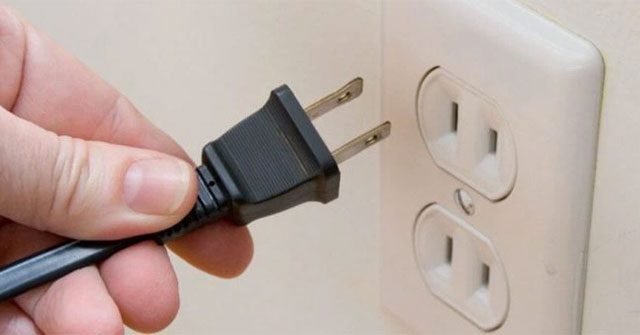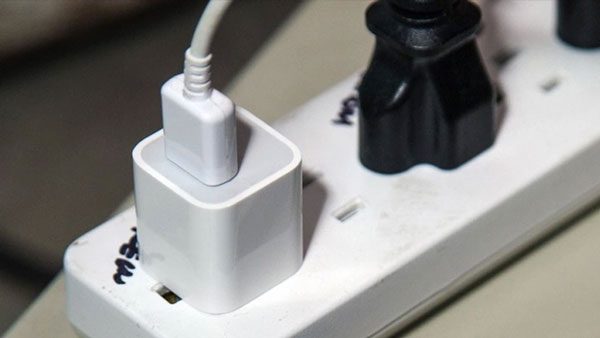By simply developing the habit of unplugging devices after use, everyone can save a significant amount of electricity daily in their homes.
Many people mistakenly believe that turning off a device means it is completely inactive and not consuming power. The truth is that appliances, from laptop chargers to refrigerators and CD players, continue to draw power even when turned off.
Still Consuming Power When Off
With computers, users may turn off the power and the screen, thinking that the device has been entirely shut down. However, while the CPU indicator light is off and the screen is dark, a small current still flows through the machine. This is known as standby power, which, although not substantial, still results in wasted electricity.
Therefore, the most effective solution to avoid wasting electricity is to unplug devices immediately after use. This practice helps prevent power leakage and saves energy.

According to the U.S. Department of Energy (Energy.gov), many electronic devices still consume power after we turn them off but do not unplug them. Specifically, internal functions such as lights and displays remain active, thus consuming a certain amount of electricity.
Phone or laptop chargers continue to draw power even when not connected to a device. Other household appliances, like refrigerators and dishwashers, still operate due to automatic displays, internet connectivity, or other controllers.
The amount of energy consumed when not in use is known as idle power, accounting for about 5-10% of the total power consumption of devices. Therefore, by simply adopting the habit of unplugging after use, households in the U.S. can save approximately $100 per year, according to the U.S. Department of Energy.
However, Cnet notes that this figure depends on the number of electrical devices in each household. Specifically, a study by Colorado State University found that users would waste about 4 watts if they had a radio, CD player, and cassette player in their homes, regardless of usage.
Thus, cutting power when not in use can save energy over 100 times throughout the device’s lifespan.
Another study by the Natural Resources Defense Council (NRDC) also indicated that reducing electricity from devices with automatic functions could help users save $8 billion per year and 64 billion kWh of electricity annually.
Moreover, this habit contributes to environmental protection by reducing carbon dioxide emissions by 44 million tons. NRDC estimates that, on average, devices with automatic functions can cost households up to $165 per year.
Developing the Habit of Unplugging
For this reason, users should prioritize energy savings in their daily activities. Everyone should cultivate the awareness of unplugging computers and other electrical devices around them, such as TVs, set-top boxes, radios, or CD players, when not in use.

Users should turn off the TV with the remote and then unplug it. If the TV will not be used for several days or during inclement weather, it is advisable to turn off the TV with the remote and then unplug it.
When indoor temperatures are comfortable and air conditioning is not needed, users should unplug the unit or turn off the circuit breaker to avoid wasting electricity and reduce the risk of electrical fires.
Additionally, users should make it a habit to unplug chargers immediately after charging devices such as phones, music players, or lamps.
However, many people find it cumbersome to unplug and plug devices back in, especially when outlets are hard to reach. Cnet recommends using a multi-socket power strip. This way, users can simply flip a switch on the power strip to turn off multiple devices at once.
Alternatively, users can set timers to automatically turn devices off when necessary. For example, if a timer is set on the TV, it will only turn on during regular usage times, such as evenings or weekends.
Another solution is to opt for energy-efficient products with energy-saving labels. These labels help consumers choose appliances and devices that consume less energy.
In addition to regularly unplugging devices, users should also make it a habit to turn off lights when not in use or adjust room temperatures appropriately to save electricity.





















































